(논문 요약) The Llama 3 Herd of Models (Paper)
핵심 내용
- param size: 8B, 70B, 405B
- context window: up to 128K
- tokenizer: vocab with 128K tokens (100K tokens from the tiktoken + 28K additional tokens for non-English languages)
- architecture: 단순함을 위하여, Mixture of Experts 사용하지 않고 transformer decoder 사용
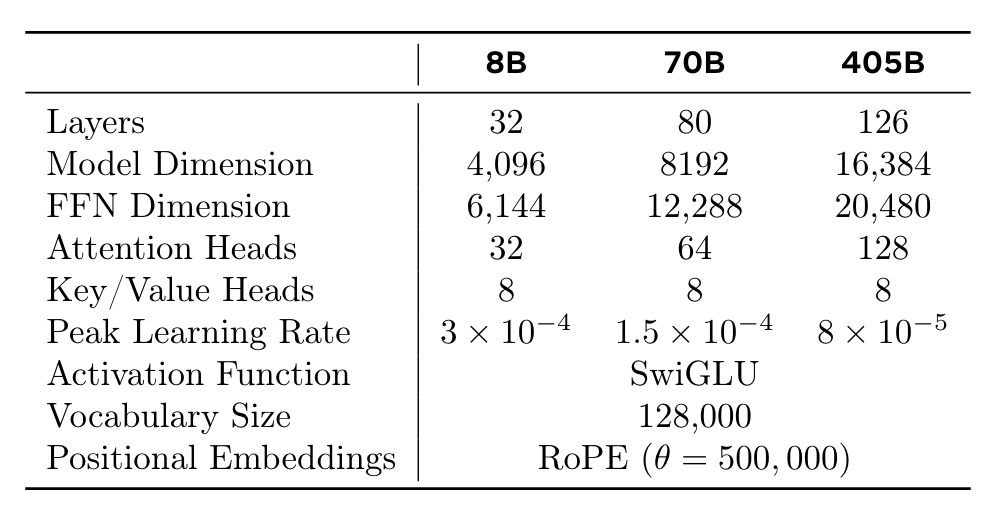
- pretrain
- 데이터 개선
- custom website-filtering
- custom html parser
- deduplication with url and Minhash (doc-level) and CCNet (sentence level)
- heuristic filter of low quality texts: log, error message, slangs, documents with outlier-vocabularies
- classifier-based filter of low quality texts: fasttext (classify wikitexts) + roberta-based classifier
- domain specific filtering for code and math data
- 50% of tokens - general knowledge, 25% - mathematical and reasoning, 17% - code , 8% - multilingual.
- scaling law
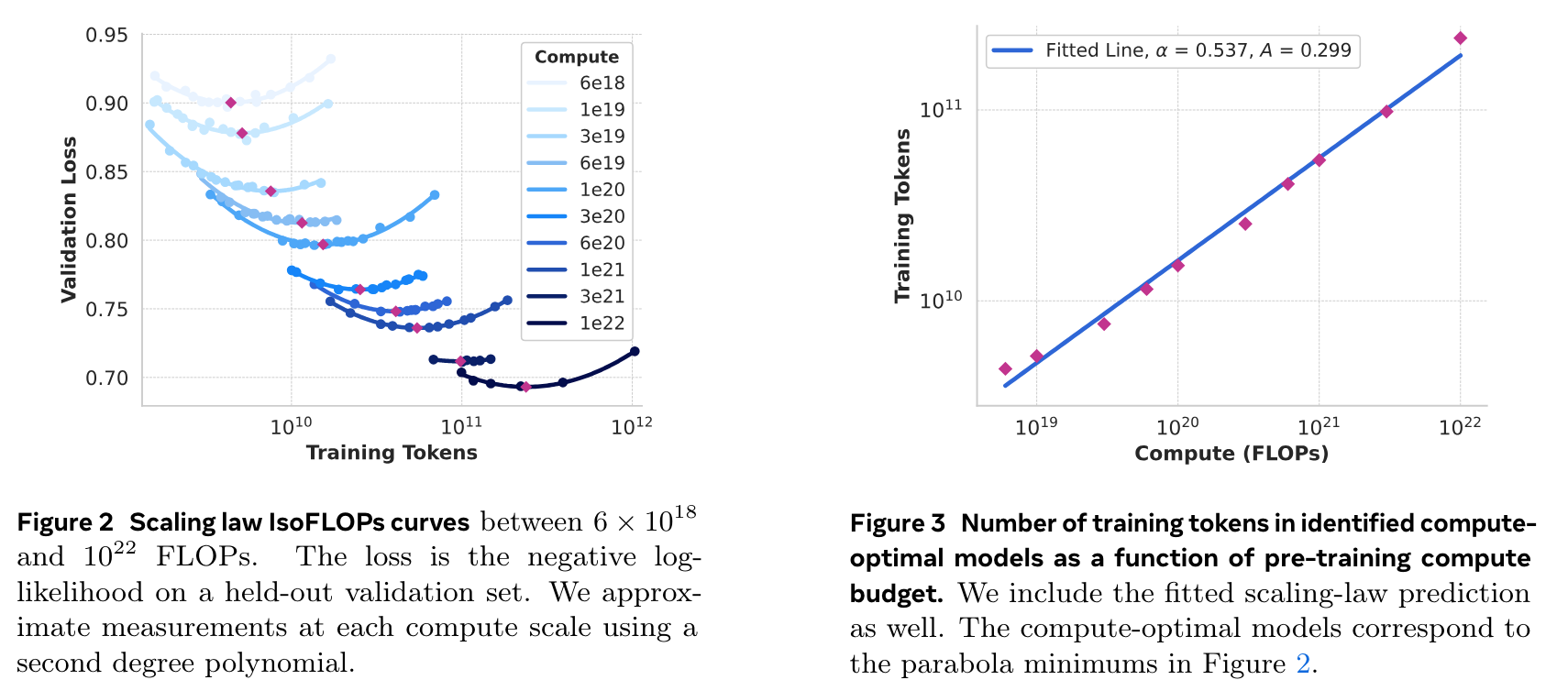
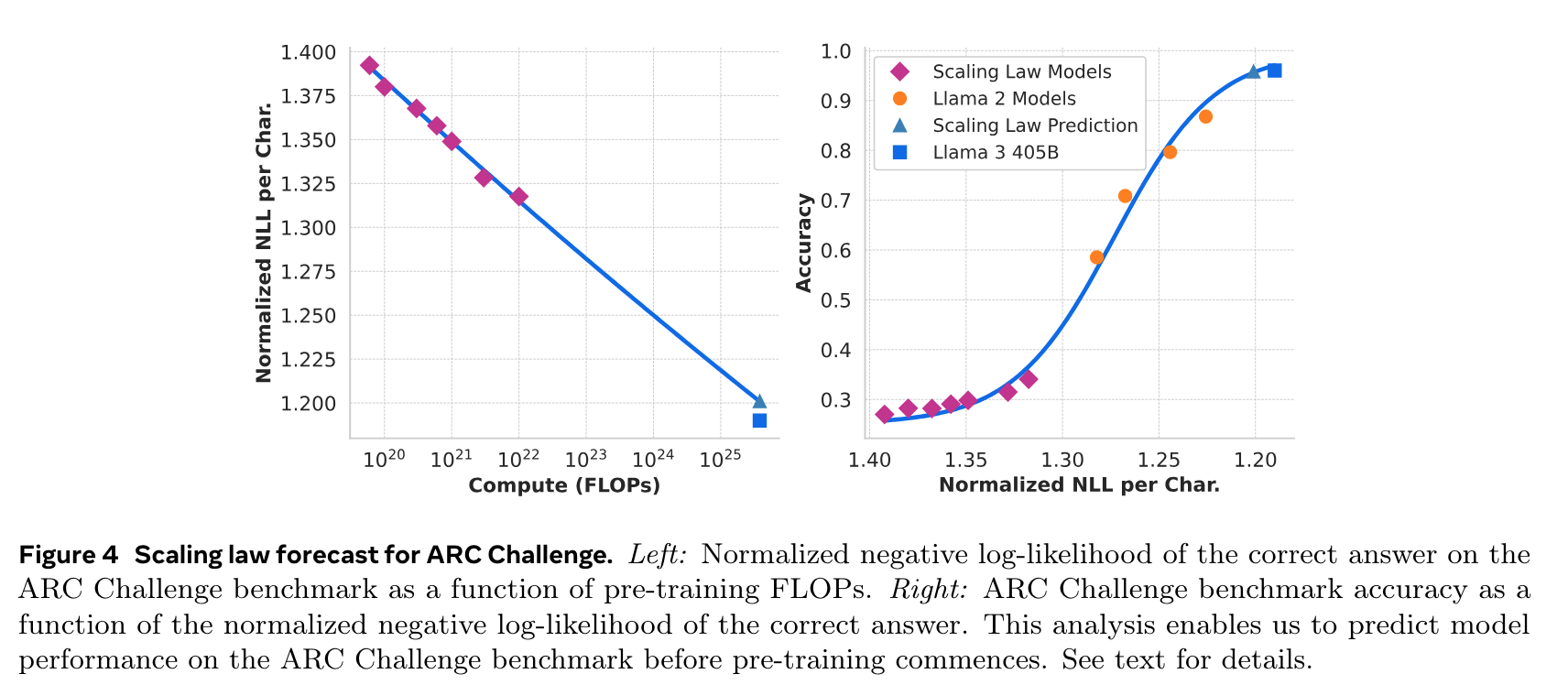
- 학습시 tensor parallelism, pipeline parallelism, context parallelism, data parallelism 활용
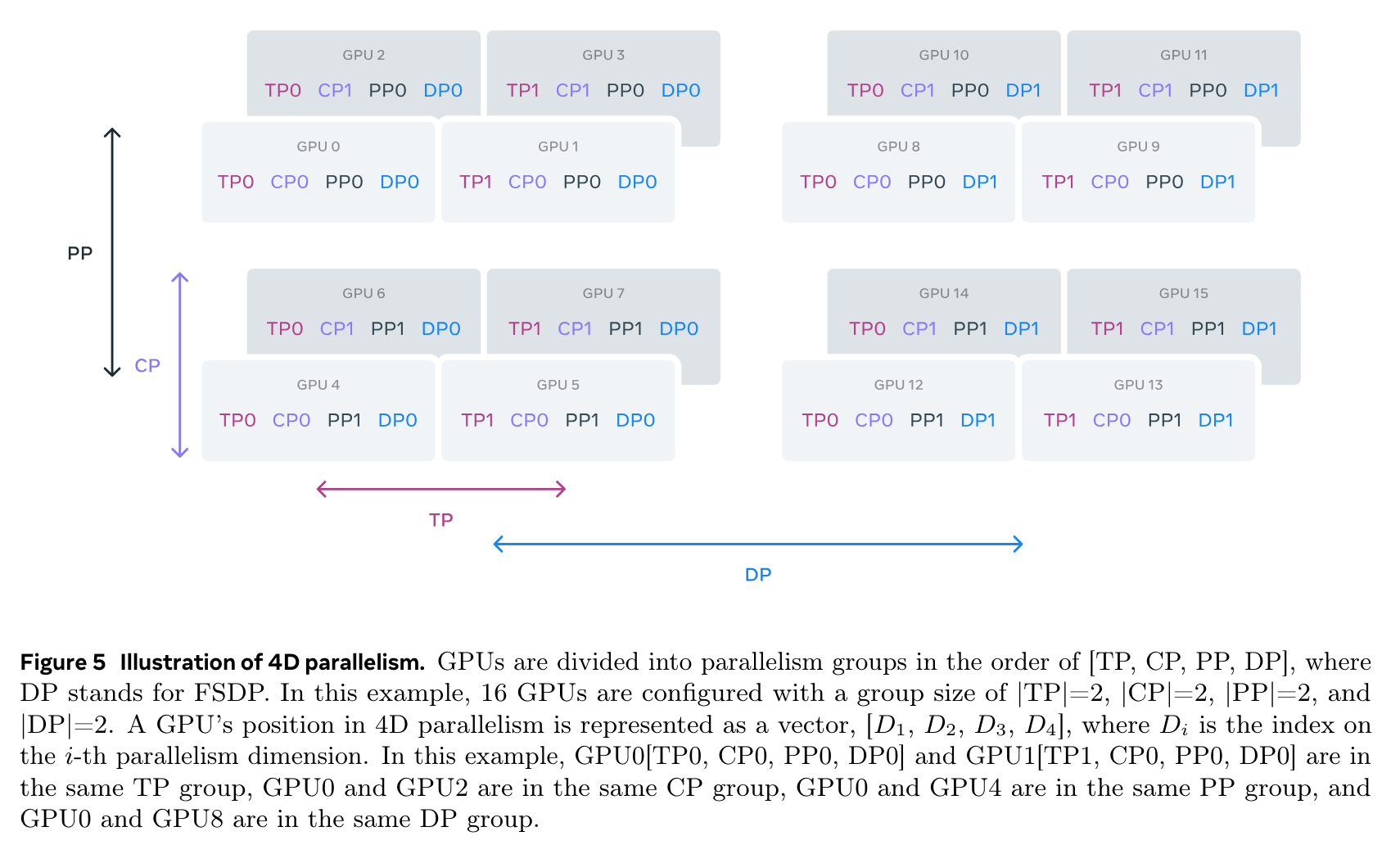
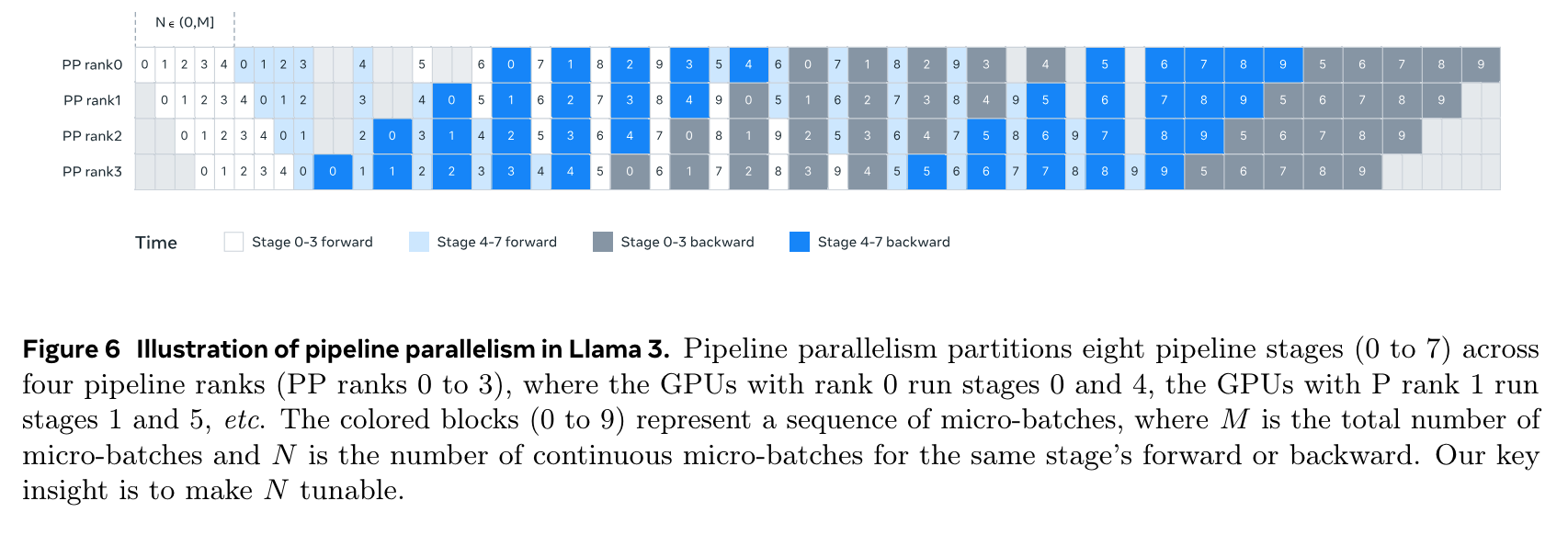
- (1) initial pre-training, (2) long-context pre-training, (3) annealing (data upsampling, weight average) 으로 진행
- 데이터 개선
- post-training
- Reward Model 을 humman annotated data 로 학습 (chosen & edited > chosen > rejected)
- rejection sampling: 모델의 output 중 Reward Model 로 평가했을때 가장 좋은것을 취득
- code data
- 데이터 생성: code snippet 을 prompt 로 하여 문제 생성. 그 문제를 풀게함. static analysis (직접 돌려봄) 과 unit-test 를 (생성하여) 통과할때까지 conversation 한 뒤, 데이터에 포함시킴
- 코드 번역: python (common) -> php (rare) 과 같은 과정으로 rare code 를 보충
- 주석: original code -> generated 주석 -> generated code 를 돌리고, 이 3개를 모델에 주고 주석이 잘 쓰여졌는지 물어본 뒤, 확신도가 높은 것만 SFT 데이터로 활용
- reasoning data 는 모델을 활용하여 logical step 이 맞는지 판별하여 데이터 확보
- tool use 는 모델을 활용하여 데이터 생성후, executable 하고 correct format 인 것들만 데이터로 추가
- hallucination 예방 학습
- pretrain data 에서 일부 text 가져옴
- 해당 내용에 대해서 모델에 물어봄 (zero-shot)
- text 와 generation 이 같은지 모델에 물어보고 같은지 물어봄
- informativeness 를 모델에 물어봄
- informative 하고 text 와 generation 이 다른 질문들에 대해서, 대답하지 않도록 학습
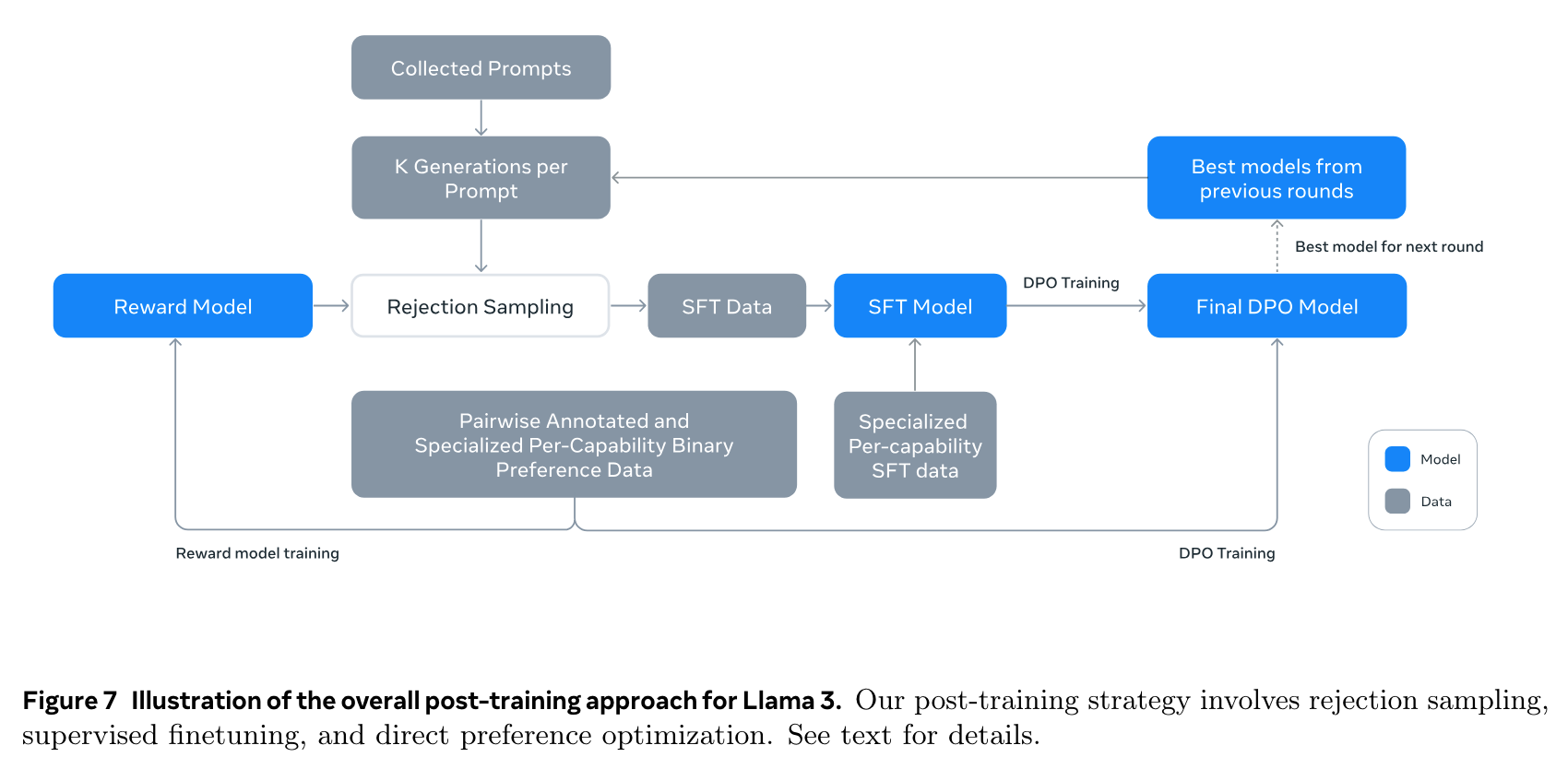
실험 결과
